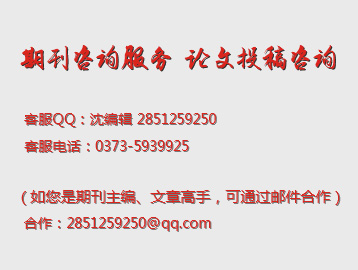On Translation Strategies from the Perspectives of Thematic Progression
Abstract: Thematic structure is an important grammatical device to organize the text, which is also an important aspect of discourse analysis. And thematic progression plays an important role in the analysis of textual cohesion and organization. This paper mainly discusses the theory of thematic progression and its application to translation between English and Chinese.
1. Introduction
In recent years, the domestic translation field introduces some linguistic theories and outcomes successively. This paper applies the theory and the analytical method of thematic progression into translation practice and endeavors to make a conclusion of translation strategies from translation practice under the pattern of thematic progression, in hope of realizing the functional equivalence between target language and source language as greatly as possible.
2. Translation Practice under the Pattern of Thematic Progression
Zhu Yongsheng puts forward four basic patterns of thematic progression from summarizing of all the patterns of thematic progression, which are TP with same theme, TP with same rheme, TP with line-type and crossed pattern (Zhu 1995). This part analyzes translation practice under these four patterns of thematic progression respectively.
Thematic progression with same theme means all the clauses has the same theme and the discourse develops by the consistent theme. Under such circumstance, it stresses on the cohesion of theme when translating. Pronoun, the conjunction or participle can be used to substitute theme to achieve the cohesion of theme.
Eg: 你要在这种城市里住久了,和它(巷)真正成为了莫逆,你才有机会看见她,接触到她优娴贞静的风度。
Target language: You’ll never have an opportunity to see it and savour its gentle poise until you have become truly attached to the small town after living there for a long time.
Thematic progression with same rheme means that the cohesion of discourse by using the same rheme. It often uses parallel structure or synonymous structure to reaching the cohesion effect of discourse.
Eg: 老人也好,年轻人也好,男人也好,女人也好,都要定期检查身体以了解自己的身体状况。
Target language: The ole (T1), the young (T2), men (T3) and women (T4) ought to take physical (R1=R2, R3 and R4) examinations at regular intervals so as to know about their own health.
Thematic progression with line-type refers to the rheme in the first clause that is the theme of the next clause. When translating Chinese into English, there are some points that should be paid attention to. Firstly, the attributes and attributive clauses are often used to achieve the cohesion of target language. Secondly, non-predicate structures like adverbial and appositive can be used in translation from Chinese to English.
Eg: 走过几家墙门,都是紧紧关着,不见一个人影,因为那都是人家的后门。
Target language: You’ll find the doors in the walls close shut without a soul in sight because they are back doors to some households.
Cross pattern is the most complicated pattern of thematic progression, which means the theme in the first sentence is the rheme of the second sentence. When translating Chinese into English, the theme should be unified to achieve the effect of cohesion of discourse.
Eg: 它又深又长,一个人耐心静静走去,要老半天才走完。
Target language: It is long and deep, so it will take you a long while to walk patiently and quietly through it from end to end.
3. The Translation Strategies Summarized from the Translation Practice
Baker indicated that thematic progression of source language should be reproduced in the target language in some kind of proper manner (Baker 1992). Thus, it is very important to use thematic progression theory into translation in a flexible way.
First of all, it is necessary to retain thematic structure of source language without misinterpreting target language, achieving the effect of functional equivalence.
Eg: 黛玉(T1)//只带了两个人来(R1):一个(T2)//是自幼奶娘王嬷嬷(R2),一个(T3)//是十岁的小丫头,亦是自幼随身的,名唤作雪雁。
Target language1: Dai Yu//had brought with her only Nanny Wang, her old wet nurse, and ten-year old Xueyan, who had also attended her since she was a child.
Target language2: Dai Yu//had brought with her only two attendants: one//was Nanny Wang, her old wet nurse, the other//was ten-year old Xueyan, who had also attended her since she was a child.
This example has two versions of target language. In the source language, the rheme of the first clause is used separately in the following two clauses as theme. The first version of target language changes thematic structure of source language and becomes a sentence. However, the second version of target language reflects the implication contained in the sentence.
Besides, an excellent translator will not impose a language’s morphological structure on another language and he will make necessary adjustment to represent the information contained in source language in unique structure of target language (Nida 2006). Thus, the thematic structure of target language should be adjusted and reconstructed to achieve natural functional equivalence, which can be illustrated in the following example.
Eg: Do you see the glass as half full rather than half empty? Do you keep your eye upon the doughnut, not upon the hollow?
Target language: 盛有半杯水的杯子,你是否只考虑它有水的一半,而不考虑它那没水的一半?空心的面包,你是否只盯着那圈面包,而不去理会那个空心?
4. Conclusion
In the process of translation, translators should regard the discourse as a whole and retain thematic progression of source language as far as possible. However, if thematic progression of source language influences the cohesion of target language due to difference between Chinese and English, translators should reconstruct thematic progression of target language based on its own features.
Reference
Baker, M., In other words [M]. London: Routledge,1992.
Nida, E. A.& Taber, C. R, The theory and practice of translation [M], Shanghai: Shanghai Foreign Language Education Press, 2006.
张曦,主位推进模式视角下的汉英翻译策略[J]. 文学语言学研究,2011(60)
朱永生,主位推进模式和语篇分析[J]. 外语教学与研究,1995(3)
- 别被这个老掉牙的报纸理论版投稿邮箱误导了!最新核实91个报纸理论版投稿邮箱通道,一次集齐
- 喜报!《中国博物馆》入选CSSCI扩展版来源期刊(最新CSSCI南大核心期刊目录2025-2026版)!新入选!
- 2025年中科院分区表已公布!Scientific Reports降至三区
- 2023JCR影响因子正式公布!
- 国内核心期刊分级情况概览及说明!本篇适用人群:需要发南核、北核、CSCD、科核、AMI、SCD、RCCSE期刊的学者
- 我用了一个很复杂的图,帮你们解释下“23版最新北大核心目录有效期问题”。
- CSSCI官方早就公布了最新南核目录,有心的人已经拿到并且投入使用!附南核目录新增期刊!
- 北大核心期刊目录换届,我们应该熟知的10个知识点。
- 注意,最新期刊论文格式标准已发布,论文写作规则发生重大变化!文字版GB/T 7713.2—2022 学术论文编写规则
- 盘点那些评职称超管用的资源,1,3和5已经“绝种”了

 0373-5939925
0373-5939925 2851259250@qq.com
2851259250@qq.com



